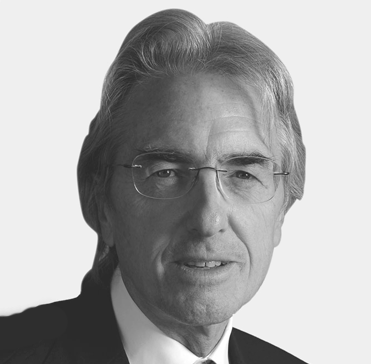
Stefano Odorizzi
EnginSoft, CEO and Co-founder
“Welcome”
Download full presentation
Graduated in Civil Engineering in 1973, Stefano Odorizzi started his activity as researcher in 1976 at University of Padova, where he holds the course of Solid Mechanics. CEO and co-founder of EnginSoft, multinational consultancy company engaged in Simulation Based Engineering Science, he actively promotes numerical simulation for research activity, with particular attention for manufacturing process, metallurgy, multi-disciplinary and multi-objective optimization. Since 1977, he has been Project leader of a large number of EU co-funded research projects (like COMETT, CRAFT, BRITE-EURAM, MURST, EU-RTD); he is an active member of several associations (ISOPE, ASM Europe, AICAP, AIM, ATA, NAFEMS) and he plays an important role within prestigious European Networks (MACSinet, FENET, INGENET, TECHNET). His commitment in numerical simulation dissemination is witnessed by his many initiatives as General Manager of EnginSoft, in academic research and advanced training and education.
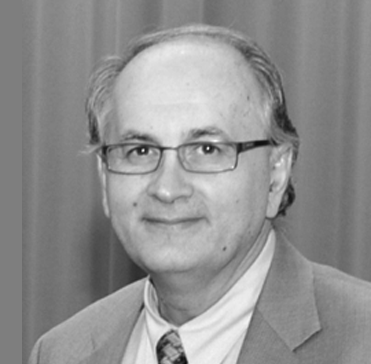
Mario J. Felice
Ford Motor Company, Global Manager of Powertrain NVH & Systems CAE Dept.
“Providing the Transformational Means to a New Era of Sustainability and Mobility Automotive Application to the Simulation of Powertrain NVH (Noise, Vibration & Harshness)”
This full presentation is not available
The automotive engineering community is now confronting the largest technological transformation since its inception. Recent advancements related to the electrification of powertrains for more efficient consumption and cleaner emissions, the reinvention of the battery with fast wireless charging capabilities to fully replace the current fuel driven vehicles and finally the advent of fully autonomous vehicles.
The car as we know it today will totally change! It will have a so-called “soul” and will be an extension of your personality which you can talk to, can read your face and lips, and would know your mood and feelings as it transports you from point A to point B. The whole concept of passenger transportation is being transformed into a Safer, Healthier and Smarter Environment.
The challenges ahead for automotive engineers are enormous and SIMULATION will be playing a very important role in delivering these Smart Vehicles in a very demanding Smart World.
Mr. Felice is Global Manager of Powertrain NVH CAE engineering at Ford Motor Company. He heads a large team of well over 100 CAE engineers located in North America, Europe, Australia and India.
He’s responsible for all the analytical support of Ford’s global powertrain development programs with the goal of delivering best NVH refinement with respect to Smoothness, Quietness and Sound Quality.
Mr. Felice has been employed with Ford Motor Company for over 40 years. During this time he's held a number of positions specializing in design and analysis of engine components and sub-systems, as well as full powertrain system.
He has published and presented at many international symposiums and conferences and earlier this year he’s been elected member of the NAFEMS Council (Board of Directors). NAFEMS is the International Society for Simulation Engineering.
Mr. Felice holds degrees in Bachelor of Science in Mechanical Engineering from the Fairleigh Dickinson University (New Jersey) and Masters of Science in Mechanical Engineering from the University of Michigan.
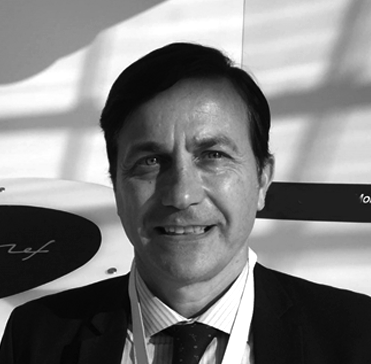
Gennaro Monacelli
CNH Industrial, Head of Design Analysis and Simulation and Material Engineering
“The future of Simulation in Agricultural Machinery towards 2050!”
Download full presentation
CNH Industrial (CNHi) is a global leader in the capital goods sector that designs, produces and sells agricultural and construction equipment, trucks, commercial vehicles, buses and specialty vehicles, in addition to a broad portfolio of powertrain applications. Specifically, in the agriculture business CNHi represents one of the major full-line manufacturer which produces, with different brands, all the following products: Tractors, Planting & Seeding, Application equipment, Harvesting machines, Tillage tools, Windrowers, Mowers and Conditioners, Forage Harvesters and Blowers, Balers, Loaders and Attachments, Utility vehicle, Advanced Farming Systems and other products.
In the last decades, the agricultural machinery market has become highly competitive and the manufacturers of agricultural equipment have been pushed to continuously innovate their products, increasing the performances, the quality and reliability of their machines. We have seen that ‘digital simulation’ can accelerate the process of the Agricultural Machinery Design and improve the machine performances. For this reason, at CNHi we have introduced the digital approach in all the phases of the new product development process, with the goal to simulate digitally the whole Product and its performances. Our design team, starting from the early stage of the new product design, develops the complete digital representation of the Product (Digital Mock-Up) and the Plant (Virtual Manufacturing). Another big step is to identify the vehicle mission in order to reproduce on the test bench the different manoeuvres that the test engineers perform in the field (from the field to the bench). Finally, the simulation team reproduces on computer all the vehicle missions on the computer (going from ‘the bench to the math’). At this point we need to able simulate in accurate way all the range of operations and conditions that machines must perform in field. For this reason, a big area of our simulation team is dedicated to simulating the different seeds, soils and crops (in various stages of being processed), that can change their properties depending on the location and seasonal conditions. In fact, the variability of these properties can have a strong influence on the machine performances.
Having the ‘complete digital model’ of the new product, the Virtual Reality Centre has become the place where all the stakeholders of the product platform team executes the design reviews, analyses alternative solutions and deliberates product and process solutions. Using the immersive virtual environment (VR simulators), we can include in the design loop also members of the Brand & Marketing, Customers & Dealers that can evaluate the product features some years before the market launch of the new product.
The expected benefits of using Virtual Simulation are, therefore, the reduction of development time (it enables the concurrent engineering), the reduction of development costs (better design through virtual pre-checks, less modifications and less physical tests) and the quality increase (a product that fits perfectly with customer requirements).
Gennaro is the Simulation and Material Engineering world-wide responsible for CNH Industrial.
From 2014 to 2016 he was the Responsible of Innovation Department for all CNH Industrial Sectors and at the same time President of ALTRA SPA, Center of Excellence for the study of ALternative TRActions.
From 2008 to 2014 he covered the role of simulation director for agricultural and construction machinery at Fiat Industrial.
From 2006 to 2008 he worked at the Centro Ricerche Fiat as head of the "Intersectorial Methodology Innovation Master Plan". From March 1990 to June 2006 he worked in the area of Research & Development of the FCA (Fiat Chrysler Automobile) with increasing responsibility roles.
In 2000 he was CEO of the PRODE Consortium (Product Design) composed of ELASIS (FCA) and the University of Naples Federico II, and President of the SCIRE Consortium, composed of ELASIS and the University of Rome Tor Vergata. During the same period he held the position of Adjunct Professor of "Automobile Construction and Industrial Standardization" at the "Second University of Naples" and the "University of Naples Federico II" for about 10 years. He graduated in electronic engineering at the University of Naples Federico II.
From 2016 he is a member of the Board of Directors of the CRIT research consortium on behalf of CNH Industrial and President of the regional section of the GDF association (FIAT Director Group).
From 2017 he is in the Mentor Board of the ASTER, which is the Consortium for innovation and technology transfer of Emilia-Romagna region.
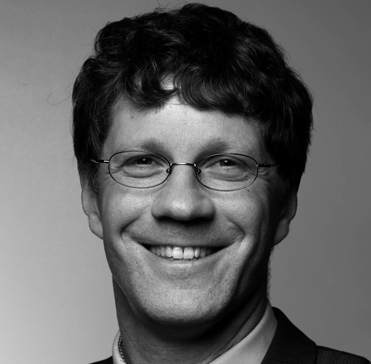
Stefan-Alexander Schneider
University of Applied Sciences Kempten, Professor of Advanced Driver Systems and Coordinator of the Master´s Course
“From ADAS to AD: Enabling the Disruption”
Download full presentation
The presentation gives an overview about the challenges of the disruption from ADAS to AD and the key role of the modeling and simulation tools.
Prof. Dr. Schneider is sponsored Professor of Advanced Driver Systems and coordinator of the newly founded Master´s Course at the University of Applied Sciences Kempten.
Prof. Dr. Schneider studied Mathematic and Physic at the Technische Universität München, Germany, concluding with a diploma in 1995 and a Doctor rer.-nat., Mathematics and Computer Science in 2000. His first industry position was with Infineon Technologies AG where he worked as a development engineer in the department of Advanced Technology Software.
From 2001 – 2003, Prof. Dr. Schneider was with Axxom Software AG where he designed and developed mathematical optimization methods as a Senior System Analyst. Furthermore, he worked as Methods Engineer at BMW AG where he was concerned with Process, Method and Tool for Functional and Software Development, for Modeling Multi-domain Physical Systems, in particular with the programming language Modelica.
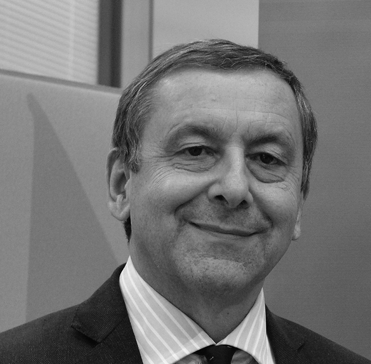
Francesco Profumo
Fondazione Bruno Kessler, President
"Future built on Artificial intelligence From Deep Competencies built in 30 years of Research to an Innovative Vision for the AI of the Future"
Download full presentation
FBK built the future on a new generation of Artificial Intelligence, which does not replace humans at work, in their life but collaborate with them.
FBK*AI for citizens, which makes the city more livable, enjoyable, and safe.
FBK*AI for humans who enjoy an healthy style of life.
FBK*AI that lets machines and people work together, in a more productive, safe, pleasant, enjoyable factory.
FBK*AI for humans who respect the environment and its resources.
FBK*AI that helps humans to discover the secrets of world and matter physics.
Francesco Profumo (M’88-SM’90) was born in Savona, Italy, in 1953. He is Professor of Electrical Machines and Drives at Politecnico di Torino and Adjunct Professor at University of Bologna. He was Visiting Professor at University of Wisconsin – Madison (1986-1989), at Nagasaki University (1996-1997), at Czech Technical University (1999) and University of Cordoba (2004 and 2005). Dr. Profumo was the Dean of the Engineering Faculty at the Politecnico di Torino (2003 to 2005) and the Rector of the Politecnico di Torino (2005 to 2011).
He has been appointed as President of CNR (National Research Council) in July 2011 and as Italian Minister of Education, University and Research (MIUR) in November 2011. Prof. Profumo is the Chairman of Bruno Kessler Foundation, the Chairman of Fondazione Compagni di Sanpaolo, the Chairman of Turin Campus ESCP, the Chairman of SAFM.
His fields of interest are power electronics conversion, high power devices, applications of new power devices, integrated electronic/electromechanical design, high response speed servo drives, new electrical machines structures, power conditiong systems for fuel cells applications.
He published more than 250 papers in International Conferences and Technical Journals. Dr. Profumo won the IEEE-IAS second prize paper in 1991(USA) and in 1997 (USA), the IEEE-IAS first prize paper in 1992 (USA) and the JIEE-IPEC first prize paper in 2005 (JAPAN).
He was awarded by the Signum Aureum Facultatis Mechanicae Universitatis Miskolciensis, July 1, 2000, University of Miskolc (Hungary), by the Honorary Professorship, University of Cordoba (Argentina),
August 11, 2004, by the Honorary Doctor Degree, Technical University of Riga (Latvia), October 12, 2006, by the Honorary Doctor Degree, Politechnica of Bucarest (Romania), June 15, 2007, by the Honorary Doctor Degree, University of Miskolc (Hungary), June 26, 2007, by the Honorary Professorship, Jiao Tong University, Xi An (China), September 11, 2007, by the Honorary Professorship, Henan Polytechnic University, Jiaozuo (China), September 27, 2009, by the Honorary Doctor Degree, Politechnica of Tirana (Albania), October 1, 2009, by Honorary Professorship, Tongji University, Shanghai (Cina), June 20, 2012 and by Honorary Professorship, Luoyang Normal University, Luoyang (Cina), November 22, 2013.
Further awards: China Awards by Italy_China Foundation (2009), Certificate of Appreciation by Fulbright Commission (2009), Orden Universidad Javeriana by Javeriana University (Bogotà, Colombia) (2010), Escudo de Oro by University of Antioquia (Medellin, Colombia) (2010),Lion d'Oro by Lion International (Torino) (2008), Award Valdo Fusi (Torino) (2011), Award Guido Carli (Rome) (2011) and Award Pericle (Torre di Ruggiero) (2013).
He has been the Chairman of the G8 University Summit 2009, (Torino) (2009) and the Chairman of the Columbus Association (55 European and Latin American Universities) (2006-2011).
He has been the Chairman of IREN Group (2013-2016), Member of the Board of Unicredit Private Bank (2008/2010), of the Board of Il Sole 24 Ore (2007/2009), of the Board of Fidia (2007/2011), of the Board of Telecom (2011), of the Board of Pirelli (2011) and of the General Committee of Unicredit Private Banking (2011).
He is Member of Academia Europaea - Physics and Engineering Section (2010) and member of the Accademia delle Scienze (2008).
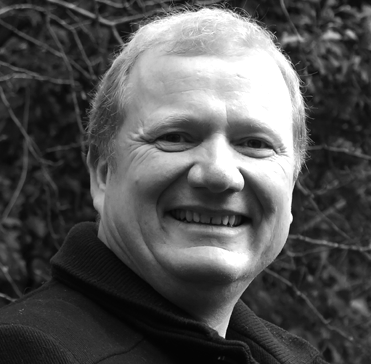
John Goodacre
University of Manchester, School of Computer Science, Professor of Computer Architectures
“Will your software need to change for exascale? The challenges on power efficient hardware”
Download full presentation
Prof. John Goodacre holds a Professorship in Computer Architectures in the School of Computer Science at the University of Manchester while also being the Director of Technology and Systems in the Research Group at ARM Ltd and is co-founder and Chief Scientific Officer at Kaleao Limited. His career has included the realisation of the first scalable commodity telephony platform, the introduction of the first real-time collaboration tools shipped in Microsoft Exchange 2000, while more recently, was responsible for the design and introduction of the ARM MPCore multicore processor and associated technologies. His roles today extend across both academic and industrial research topic, focused around web-scale servers, exascale efficient systems and ubiquitous computing, while also driving forwards the technological vision for the Kaleao systems roadmap. This gives him a unique hardware and software background with experience from embedded to the largest of big data and HPC systems. He sits on various advisory boards at both national and European level and is a frequent conference speaker.
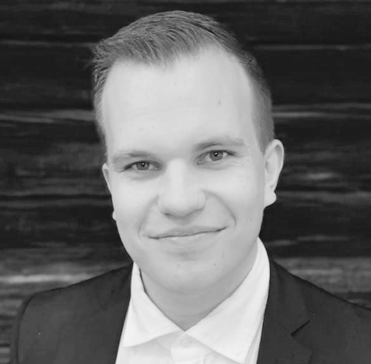
Juho Raukola
Wärtsilä Corporation, Additive Manufacturing innovation expert
“Big thinking more than top technology – A smart approach for Additive Manufacturing”
Download full presentation
Global megatrends such as artificial intelligence, advanced data analytics, simulation, and the Internet of Things will inevitably have a massive impact on the manufacturing industry. This will be realized through rapid shifting from an experience and physical product-based industry to businesses based on a virtual, data-driven model of the product and the whole production ecosystem. In terms of the ever-increasing need for tailoring and case-specific optimization of products to improve overall performance, using a virtual environment for as long as possible can be extremely beneficial. However, converting these fine-tuned digital models into real, physical products can be problematic due to the increased amount of customization and complexity, which is further translated into increased costs and lead times.
Additive Manufacturing (AM, also 3D printing), thanks to the design freedom it provides, can be effectively utilized to fulfil the requirements of modern industry. Custom-made tooling can be produced on-demand for a fraction of the costs of conventionally manufactured tools, and the potential for high-performance end-use parts is endless – both in metal and polymer materials. Being an inherently different manufacturing process to conventional subtractive methods, however, a significant investment in knowledge must be made in order to unlock all the potential that Additive Manufacturing makes available. This speech will shed some light on Wärtsilä’s insights into the current and near-future potential of Additive Manufacturing, and how to implement it in a smart way, illustrated with concrete business case examples from the real-life factory-floor level.
Wärtsilä is a global leader in smart technologies and complete lifecycle solutions for the marine and energy markets. By emphasising sustainable innovation, total efficiency and data analytics, Wärtsilä maximises the environmental and economic performance of the vessels and power plants of its customers.
Juho Raukola is an Innovation Expert in Wärtsilä Corporation, and is the main specialist in the area of Additive Manufacturing within the company. He is responsible of forming and implementing utilization strategy for AM technologies in company, and building up global AM ecosystem for supporting current businesses and creating completely new value chains in Marine & Energy sectors enabled by AM. Raukola did his Master’s thesis “Characteristics and applications of metal additive manufacturing in 4-stroke engine manufacturing process” in Wärtsilä’s Vaasa site in Finland during 2017, and in January 2018 was then appointed as the first Additive Manufacturing Engineer in the history of this 18 000-people company. In June, he was promoted into his current position in Wärtsilä’s Global Smart Manufacturing organization, working on recognizing and developing feasible applications for additive manufacturing both in end-use components and the manufacturing processes of the company’s products, and fostering new kind thinking the smart approach for Additive Manufacturing requires.
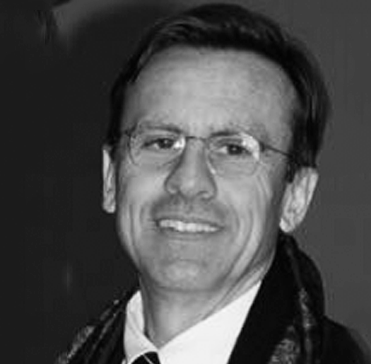
Aleksandar Jovanovic
European Virtual Institute for Integrated Risk Management (EU-VRi), CEO
“Common methodology and common database for the indicator-based assessment of resilience of critical infrastructures”
Download full presentation
Resilience of modern societies is largely determined by and dependent on resilience of their critical infrastructures such as energy grids, transportation systems, governmental bodies and water supply. This is clearly recognized by the European Union in its policies and research agenda, such as the DRS (Disaster-Resilience) actions and projects safeguarding and securing society, including adapting to climate change. In this context, the issue of “measuring resilience” has an important place and it is tackled primarily by means of indicators, within the DRS-14 line of calls. The overall goal of the current research agenda is to improve current approaches by providing an innovative “holistic” methodology for assessing resilience of critical infrastructure. The EU research project SmartResilience propose a common methodology across all critical infrastructures and all types of hazards or threats based on resilience indicators. Generally, indicators come from a variety of sources including existing standards, public documents, company practices, literature, and similar, but are also largely defined within the project. The resilience indicators are stored in a common database. The results of the resilience assessment can be used in various ways. One is to compare with previous assessment, i.e. providing a trend showing how the level of resilience is progressing. Since the calculation is performed on all levels of the model (indicator, issue, phase, threat, critical infrastructures and area/city level), it is also possible to "drill down" and identify the reason for an increase or decrease in resilience compared to the previous assessment. Another use is to compare with other cities, areas or critical infrastructures, i.e. to benchmark against others, which provides the opportunity to learn from others. The resilience of a city/area or a critical infrastructure can also be assessed by imposing a set of threats (including defined challenges such as interactions and cascading effects), i.e. stress testing the resilience ability of the city/area/critical infrastructure, and compare the results with predefined criteria. The concept presented is practically applied with the support of new tools: the large database of indicators, tools for the assessment of the resilience level, tools for resilience monitoring, big data analysis tools and the advanced visualization tools.
Aleksandar JOVANOVIC, (1953): Worked in industry (energy), for the European Community (Belgium, Italy), in research (Argonne Ntl. Lab, Steinbeis, EU-VRi) and at universities (Germany, Japan, Serbia, France, China). Since 2001, he is the director of the Steinbeis Advanced Risk Technologies Group in Stuttgart, Germany providing consultancy in the areas of risk assessment and risk management for industry and public sector. As from 2006 he is also the CEO of the European Virtual Institute for Integrated Risk Management (EU-VRi) and the EU Project Director and lecturer at ZIRIUS (Research Center for Interdisciplinary Risk and Innovation Studies, University of Stuttgart). He is a full professor at Steinbeis University Berlin and University of Novi Sad. His other current and previous assignments include Italy (Politecnico di Milano), France (Ecole Polytechnique), Japan (University of Tokyo), USA (La Jolla), China (Beijing Capital University) and other countries.
A. Jovanovic has a long-year professional experience as project manager of many large international/multinational projects in the area innovation management, new technologies, advanced data analysis and data mining, and related areas. Main clients in the projects have been from the EU, national governments (Norway, Belgium, Japan…), industry, utilities, insurances companies, R&D and academia. Main topics covered by the current projects deal with risk management in industry (e.g. for insurance, power, process) and include HSSE (Health, Safety, Security, Environment), RCM (Reliability Centered Maintenance), RBI (Risk-Based Inspection), KPIs (Key Performance Indicators) and RCFA (Root Cause Failure analysis) and Resilience. Sample projects managed by him include iNTeg-Risk (www.integrisk.eu-vri.eu, 19.3 million €, 80+ partners), EskomRBI (RBI for power plants in South Africa, 40,000 MWe) or SmartResilience (Resilience Indicators for critical infrastructures in Europe, www.smartresilience.eu-vri.eu).
As a “risk practitioner” A. Jovanovic has contributed to the global risk community by a number of actions, such as Convener and main author of the European standards CEN-CWA 15740 (“RBI”), EN16991:2018 (“RBIF – Risk-Based Inspection Framework”) and CEN-CWA 16449:2013 (“Management on New Technologies-Related Risks”), now being developed as ISO 31050 (“Guidance for managing emerging risks for enhanced resilience”). He is a coauthor of the milestone studies/books like the “Future Global Shocks” issued by OECD (2013) of “Expert Systems in Structural Safety Assessment” (Springer, 1987), as well other 7 books and over 200 publications. He speaks fluently French, Italian, English, German and Serbian, and reads Spanish and Russian.
Unfortunately Professor Jovanovic will not be able to attend the conference, so his speech will be delivered by Mr. Svetoraz Eremić.
Svetozar Eremić is the HSE (Health, Safety, Environment) manager/director in Pančevo Oil Refinery. He has a wide experience on production processes, maintenance activities and reliability strategies and development in refinery units that he gained while working on various positions in Pančevo Oil Refinery. He is Risk Based Inspection (RBI) and Reliability Centred Maintenance (RCM) Certified Expert, Steinbeis University, Berlin. He was NIS leader in the FP7 project iNTeg-Risk - Early recognition, Monitoring and Integrated Management of Emerging, New Technology Related Risks , NIS leader in the EU project SmartResilience and the Chair of the End-User Advisory Group.
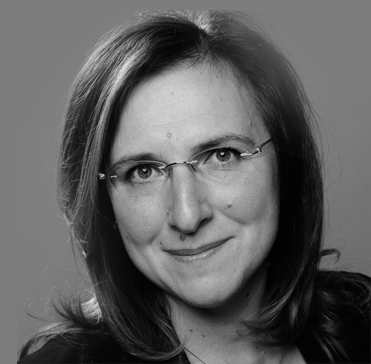
Natalia Konchakova
Magnesium Innovation Centre MagIC of the Helmholtz Zentrum Geesthacht, Senior Scientist
“Materials Modeling Translation: How Industrial Challenges can be addressed by Modeling and Engineering Simulations?”
Download full presentation
Involving of Materials Modelling as well as Engineering Simulation into business decision to develop and manufacture new products, perform novel multi-functional materials and systems, study and analyze the life-cycle performance and properties of engineering structures are considered as a European Science & Technology strength. Industry needs to use modelling tools and approaches for digital analyse of materials, products and manufacturing process, which allow varying some parameters to find the optimal product properties, design and characteristics. Integration of materials modelling to solve the industrial problem is the focus of European Materials Modelling Council (EMMC). The modelling and digital analysis offers unique insight into properties and in-service behaviour of materials, manufacturing process and understanding of the physics of materials, devices and processes. On the other side, modelling reduce product development time as well as costs and hardware for testing [1].
Materials modelling as well as digital twins are important parts of the modern business decision making. However, they need far more implementation and use in manufacturing industry to reap their full economic impact. Unfortunately, it is the big issue to find the bridging between the industrial challenges and scientific/ academic innovations, needed for the realisation of the industrial tasks.
How industry, especially SMEs, can find the modelling specialists or suitable modelling workflow to solve the concrete applied problem? Who can give the information regarding the costs of the modelling implementation and economic benefits from the modelling projects? The translation of industrial case into modelling solution is performed by Translators. They are primary players at the interface between industrial end-users on the one hand and software owners and modellers on the other hand. Translators support the usage of materials modelling in industrial R&D to the same level as experiments are used today.
The challenges and possibilities for wider industrial adoption of modelling and engineering simulations are discussed in the talk. The EMMC Materials Modelling Translation concept is presented and explained in details.
Dr. Natalia Konchakova is a Senior Scientist at the Magnesium Innovation Centre MagIC of the Helmholtz Zentrum Geesthacht - Centre for Materials and Costal Research, and Vice-Leader of the Working Group Translators of the European Materials Modelling Council (EMMC). She works in the field of Materials Modelling and Simulation of Lightweight Metal/ Fibre-Reinforced Polymer Composites Structures, Computation analysis of material damage and surface degradation due to corrosion and intensive mechanical loading as well as numerical prediction of crack propagation in engineering structures. Development of the European Materials Modelling Translation concept is the focus of the current activity of Dr. Konchakova.
Listen to some speeches